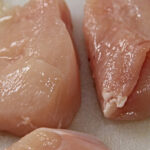By Jessica Ohana Lemes Carneiro-Goetten, Graduate student, Graduate Programme in Health Sciences and Selene Elifio-Esposito, Full professor, Toxins and Cancer Laboratory, Pontificia Universidade Católica do Paraná, Curitiba, PR, Brazil
The article “Neutrophils activated by BJcuL, a C-type lectin isolated from Bothrops jararacussu venom, decrease the invasion potential of neuroblastoma SK-N-SH cells in vitro”, published in the Journal of Venomous Animals and Toxins including Tropical Diseases (vol. 26), presents a new biological effect of BJcuL, a protein found in the venom of the snake Bothrops jararacussu. The study was carried out by researchers at the Pontifícia Universidade Católica do Paraná (PUC-PR) in Brazil.
This project was conducted between 2017 and 2019 due to a previous observation by the same group that BJcuL could activate immune cells to an inflammatory profile in cell culture models. The next step was to test the hypothesis that the activated immune cells could reduce tumor cell malignancy. This study revealed that BJcuL-activated neutrophils do not affect tumor cell growth, but significantly decrease their invasion capacity.
It is important to mention that we cannot propose BJcuL as a medicine or drug to treat cancer yet. However, our results contribute to the knowledge about this toxin and its potential effect as an antitumor agent, in addition to what is already known about its effect on colorectal and gastric cancer cell growth.
Figure 1. Experimental design.
Jessica Carneiro-Goetten carried out the project during her masters’ studies. She investigated the effects of BJcuL on different immune cells and their effect on tumor cells, supervised by Dr. Selene Elifio-Esposito, a scientific researcher at the Toxins and Cancer Laboratory of PUC-PR. The research group has been dedicated to the study of animal toxins for the last 15 years, in a fruitful collaboration with researchers from the Butantan Institute in São Paulo, Brazil, and, more recently, with the University of Burgundy in Dijon, France, for the characterization of the mechanisms of tumor cell death triggered by the toxins.
Inside a solid tumor, there is more than cancer cells. It is now well known that the immune system cells are also present and compose the tumor microenvironment (TME). The neuroblastoma (NB) is a solid pediatric tumor with about 10.54 cases per 1 million per year in children younger than 15 years old, and a mortality rate of 40% in the most aggressive cases. In 50% of this population, metastasis contributes to the fast progression of the disease. As components of the TME contribute to NB progression, immune cell modulation to an antitumoral profile could favor the treatment for high-risk patients.
Our results show that BJcuL-treated neutrophils could significantly affect the behavior of neuroblastoma cells in vitro. Viability was reduced when neutrophils were co-cultivated with the tumor cells. Simultaneously, the increment of cellular migration and the reduction of anchorage-free survival were also observed by incubating tumor cells with the neutrophils-conditioned media.
Currently, our group aims to understand the mechanism of action of BJcuL and other animal toxins in NB cells that could correspond to the high heterogeneity of this disease. To achieve this goal, we have already conducted studies on the characterization of a panel of NB cell lineages and their behavior by incubating the toxins alone or in association with immune cells. It includes the analysis of cellular proliferation, migration, and differentiation, with a greater interest in proteins of the cell death pathways.
References
ELIFIO-ESPOSITO S.L., et al. A C-Type Lectin from the Venom of Bothrops jararacussu can adhere to extracellular matrix proteins and induce the rolling of leukocytes. J Venom Anim Toxins Incl Trop Dis [online]. 2007, vol. 13, no. 4, ISSN: 1678-9199 [viewed 21 October 2020]. DOI: 10.1590/S1678-91992007000400009. Available from: https://www.scielo.br/scielo.php?script=sci_arttext&pid=S1678-91992007000400009&lng=en&nrm=iso&tlng=en
PANUNTO P.C., et al. Biological activities of a lectin from Bothrops jararacussu snake venom. Toxicon [online]. 2006, vol. 47, no. 1, pp. 21-31 [viewed 21 October 2020]. DOI: 10.1016/j.toxicon.2005.08.012. Available from: https://www.sciencedirect.com/science/article/abs/pii/S0041010105003119?via%3Dihub
DIAS-NETIPANYJ M.F., et al. Bjcula snake venom lectin, modulates monocyte-derived macrophages to a pro-inflammatory profile in vitro. Toxicol In Vitro [online]. 2016, vol. 33, pp. 118-124, [viewed 21 October 2020]. DOI: 10.1016/j.tiv.2016.02.023. Available from: https://www.sciencedirect.com/science/article/abs/pii/S0887233316300376?via%3Dihub
PIRES, W.L., et al. Lectin isolated from Bothrops jararacussu venom induces IL-10 release by TCD4. J Leukoc Biol [online]. 2019, vol. 106, no. 3, pp. 595-605 [viewed 21 October 2020]. DOI: 10.1002/JLB.MA1118-463R. Available from: https://jlb.onlinelibrary.wiley.com/doi/abs/10.1002/JLB.MA1118-463R
ELIFIO-ESPOSITO S., et al. Human neutrophil migration and activation by BJcuL, a galactose binding lectin purified from Bothrops jararacussu venom. BMC Immunol [online]. 2011, vol. 12, no. 1, pp. 10 [viewed 21 October 2020]. DOI: 10.1186/1471-2172-12-10. Available from: https://bmcimmunol.biomedcentral.com/articles/10.1186/1471-2172-12-10
To read the article, access it
CARNEIRO-GOETTEN, J.O.L., et al. Neutrophils activated by BJcuL, a C-type lectin isolated from Bothrops jararacussu venom, decrease the invasion potential of neuroblastoma SK-N-SH cells in vitro. J. Venom. Anim. Toxins incl. Trop. Dis [online]. 2020, vol.26, e20190073, ISSN: 1678-9199 [viewed 21 October 2020]. DOI: 10.1590/1678-9199-jvatitd-2019-0073. Available from: http://ref.scielo.org/jkbtjn
External links
Facebook – Journal of Venomous Animals and Toxins including Tropical Diseases <https://www.facebook.com/JVATiTD>
Facebook – PUC-PR <https://www.facebook.com/pucproficial/>
Journal of Venomous Animals and Toxins including Tropical Diseases <http://www.jvat.org/>
Journal of Venomous Animals and Toxins including Tropical Diseases – JVATITD <http://www.scielo.br/jvatitd>
LinkedIn – Jessica Goetten <https://www.linkedin.com/in/jessica-ohana-l-carneiro-goetten-768b8919a>
Twitter – Journal of Venomous Animals and Toxins including Tropical Diseases <https://twitter.com/JVATiTD>
Twitter – PUC-PR <https://twitter.com/PUCPRoficial>
Como citar este post [ISO 690/2010]:




















Recent Comments